China is a vast country with an intricate history involving many kingdoms, revolutions and myths. With its ever-increasing tourism and rise as a vibrant superpower, interest in China has increased manifold.
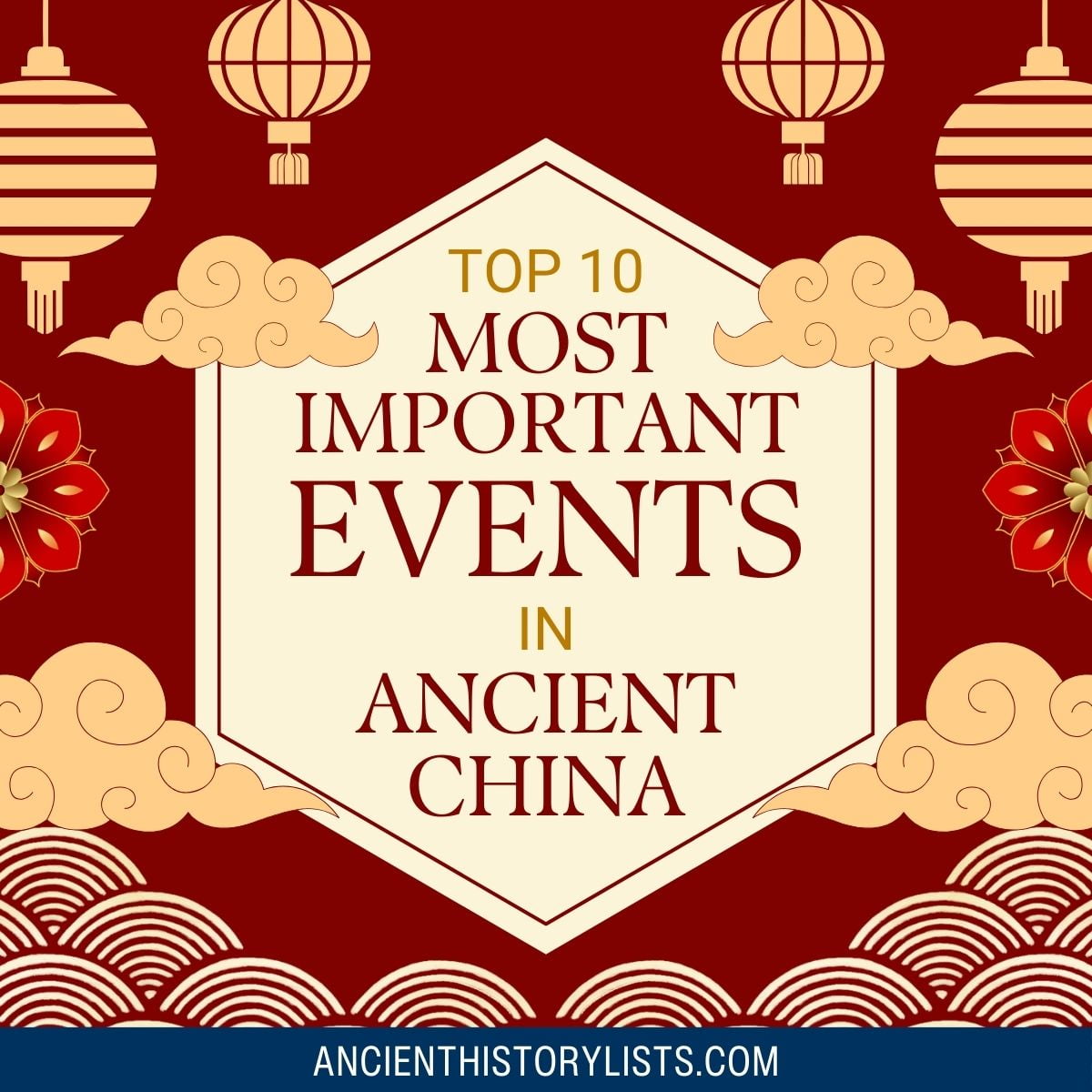
Many people are intrigued by the country’s ancient history, for example, the first appearance of the Chinese dragon in 4000 BC. The oldest-known depiction of the dragon was a jade sculpture from the ancient Hong Shan civilization, and it has since dominated Chinese culture, still featuring heavily in modern-day literature and film.
Here are the top 10 most important events of ancient China that you should know about:
1. Decline of the Western Zhou Dynasty
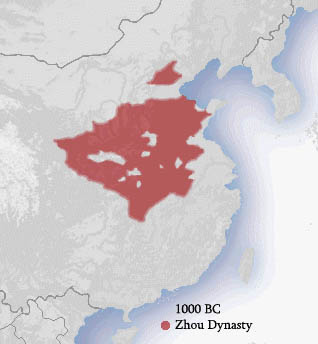
The capital of the Western Zhou dynasty was sacked by nomads and Huns in 771 BC signaling the beginning of the end of the Zhou dynasty. There were further conflicts between its vassal states later in the Spring and Autumn periods (770 BC–476 BC).
During the Warring States Period (475 BC–221 BC), three warring families, the Han, Zhao, and Wei, divided the Jin state between them. A century later, from 361 BC to 336 BC, Duke Xiao of Qin, with the help of his statesman Shang Yang, transformed Qin from a remote, outdated state into the most stable of the seven warring states, and established a political framework strong enough for his successors to vanquish the other six states.
2. The Battle of Changping and the Great Wall of China
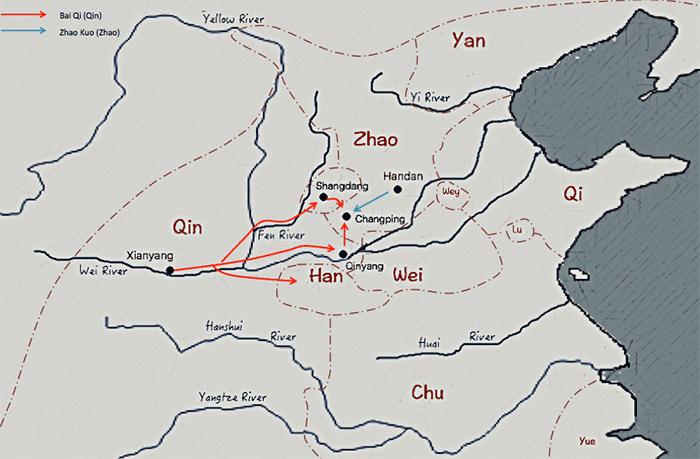
The Battle of Changping took place in 260 BC, in which Qin troops driven by Bai Qi crushed a colossal Zhao army of 400,000 men, effectively wiping out the Zhao fighting force and the state itself. The Qin were now in a position to reunify China, and this was accomplished by their leader Qin Shi Huang. This reunification had been a long time coming, since the Zhou administration had separated into various vassal states. Now, China could develop a centralized government and establish a framework for the unification of China under a single cultural and national identity.
This was the historical backdrop to the building of the Great Wall of China, a project which spanned many centuries. After Qin Shi Huang unified China, he went on to protect his newly established Qin dynasty (221 BC–206 BC) against invasions from Inner Asia by building a wall. By 212 BC, this wall ran from Gansu to southern Manchuria.
Later administrations reinforced and added to the wall. The Ming dynasty (1369 AD–1644 AD) were among those who modified, rebuilt, and extended the wall, often deviating from Qin’s original designations. The Han expanded the stronghold towards the west, while the Qi worked around 1,600 kilometers (990 miles) of new dividers and the Sui employed a million men to further enhance the build.
However, the Tang (618 AD–907 AD), the Song (960 AD–1279 AD), the Yuan (1271 AD–1368 AD), and the Qing (1644 AD–1911 AD) for the most part did not add to the wall, preferring to strengthen their defenses against Inner Asian threats through military missions and intelligence. Despite providing a good defense against attack, the Great Wall could not stop all invaders. In 1644 AD, the Manchu Qing broke right through the gates of the Shanhai Pass and overthrew the Ming dynasty.
3. Establishing Han Rule
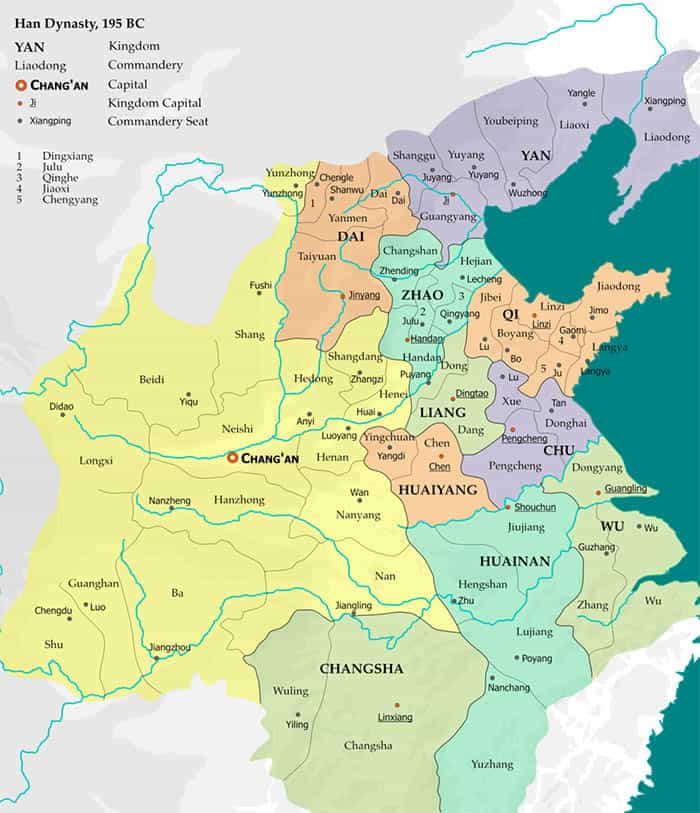
In 202 BC, the Han dynasty under Liu Bang crushed Xiang Yu, a prominent warlord, and after the death of Qin Shi Huang in 210 BC, established Han rule. This was a brilliant age and has come to define the national character.
4. Decline of Han Rule
Between the years 141 BC and 87 BC, by the standard royal edict of Emperor Wu of Han, Confucianism became the official precept of the decision-making class, and remained the population’s basic moral code for over 2,000 years.
There was also a series of successful wars against the Xiongnu tribe that removed their ability to pose a threat to the Han. A few centuries later in 8 AD, Wang Mang, a Han official, seized power and put an end to the Western Han era. Jump ahead a few centuries and Liu Xiu, a member of the Han dynasty, re-established the Han administration, marking the start of the Eastern, or second, Han era.
The Han line remained for a long time before it finally disintegrated. Then, the infamous Yellow Turban Rebellion began, marking the final defeat of the Han dynasty and slowly introducing the Three Kingdoms Period which divided China between the states of Wei, Shu, and Wu. A few centuries later, Cao Cao, a powerful warlord in northern China, was killed in the skirmish of Red Cliff, ending the aspirations of the Kingdom of Wei, and leaving Wu and Shu as the main warring states.
Then came an era of peace. The Jin dynasty under the illustrious ruler Sima reunited China under one monarch, putting an end to 100 years of war and mayhem.
5. The Battle of Fei River
The Battle of Fei River in 383 AD marked the defeat of the Qin kingdom by the Jin, leading to 200 years of war and the beginning of the Northern and Southern dynasties period (420 AD–589 AD).
The Sui administration later attacked the southern Chen dynasty, unifying the northern and southern dynasties and putting an end to war and conflict for many years. It was Emperor Wen of Sui, one of the most noteworthy rulers in ancient China, who established a framework for the thriving Tang dynasty which followed.
6. Beginning of the Tang Dynasty
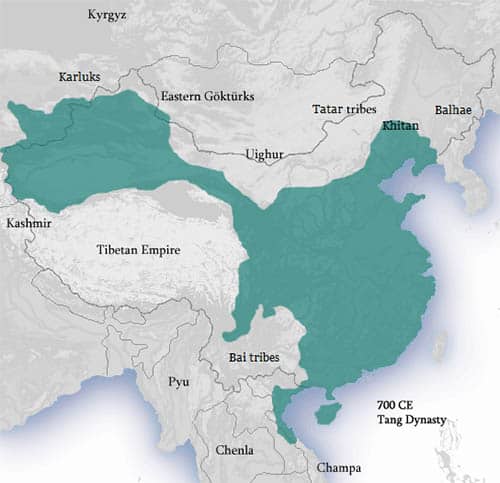
The Tang dynasty spanned the 7th to the 10th centuries AD. Its second, and most famous ruler, was Tang Taizong, who ruled from 626 AD to 649 AD and led China into a time of great prosperity.
Empress Wu Zetian ruled from 690 AD to 705 AD and was the most famous female sovereign in Chinese history. In 755 AD, the An Lushan Rebellion took place which was one of the deadliest clashes in history, leading to the death of over 30 million people (around two-thirds of the Chinese population).
It took China a long time to recover. After the fall of the Tang in 907 AD came the start of the Five Dynasties and Ten Kingdoms Period which lasted till the eventful year of 960 AD.
7. Rise of the Mongols
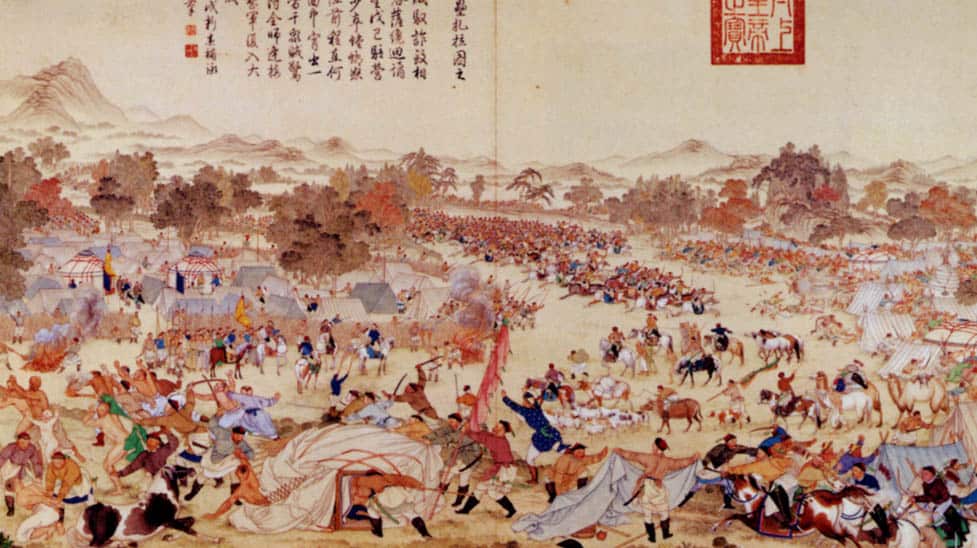
Song Taizu, who ruled from 960 AD to 976 AD was one of the greatest rulers in ancient China. In the golden age of his reign, he established a political framework which ensured the longevity and success of the Song dynasty, conquered many of the 10 kingdoms, and almost reunited China; a feat that no one could have imagined.
However, in 1125 AD, the unthinkable happened. The Jurchen tribes rebelled and captured the Song capital, Kaifeng. In 1211 AD, at the Battle of Yehuling, 500,000 Jurchen-led Jin troops were defeated by the Mongols, effectively crippling the Jin fighting force. This defeat led to the assassination of the Jin emperor and the decline of the Jin dynasty.
A few years later, the infamous Mongke Khan leader of the Mongols was murdered in a skirmish at the Diaoyu Fortress, leading to the immediate withdrawal of Mongol troops and the reinstating of the Song administration for a further 10 years. But then, peace was lost. In 1276 AD, Lin’an, the Song capital, fell to the Mongols and three years later, the Song dynasty was completely crushed.
Mongol leader Kublai Khan then established the Yuan dynasty which survived for a century. In 1368 AD, the Yuan royal family fled north over the Great Wall following an attack by Zhu Yuanzhang marking the end of Mongol rule in China, and the formation of the Ming dynasty.
8. The Ming Dynasty
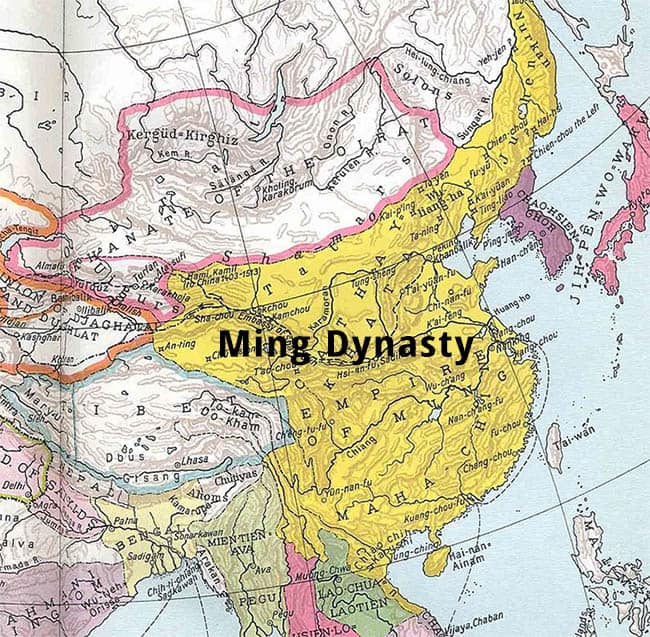
Emperor Hongwu (Chu Yuanzhang) ruled from 1368 AD to 1398 AD and was one of the most prominent yet savage leaders of imperial China. He established a framework for the longstanding political and social stability of the Ming administration, but slaughtered a huge number of his advisors and their families during this time.
The bloodshed continued with the next few generations of rulers. In 1402 AD, the Zhongle Emperor (son of Emperor Hongwu) came to power. He was as tyrannical as his father had been and killed many members of the Jianwen Emperor’s administration after defeating him in battle.
However, he contributed a lot to China’s history, building the city of Beijing and moving his capital there; Beijing remaining the capital of China to this day. He ordered naval missions to the Indian Ocean under the command of Zheng He to show the strength of the Ming dynasty and also to establish trading connections. He had a frightening amount of knowledge when it came to politics and used court eunuchs to help him rule with authority.
In 1558 AD, the Chinese defeated Japanese privateers who had been steadily plundering the Chinese coastline for years. Then in 1592 AD, the Chinese helped the Korean Joseon dynasty overcome the Japanese invasion of Korea.
9. The Chongzhen Emperor
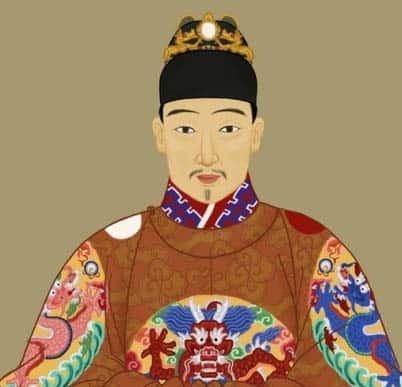
The Chongzhen Emperor came to power in in 1627 AD at the age of 16 after the death of the Tianqi Emperor. His succession was helped by Empress Zhang (widow of the Tianqi Emperor) even though it was opposed by the central eunuch, Wei Zhongxian, who wanted to retain power over the magnificent court.
From the start of his rule, the Chongzhen Emperor did his best to keep the Ming dynasty alive but despite his best efforts, years of internal corruption and an empty treasury made it difficult to fill essential government posts. The Chongzhen Emperor’s rule was dominated by his fear of rebellion within the administration which had been a major issue during the Tianqi Emperor’s rule.
Not long after his brother died, the Chongzhen Emperor promptly disposed of Wei Zhongxian and Madam Ke, the Tianqi Emperor’s nanny, an association that was known as the “Wei-Ke conspiracy.” At the same time, the Donglin Academy re-emerged, which had been crushed under Wei Zhongxian, and set up political associations throughout the Jiangnan region.
10. The Fall of the Qing Dynasty
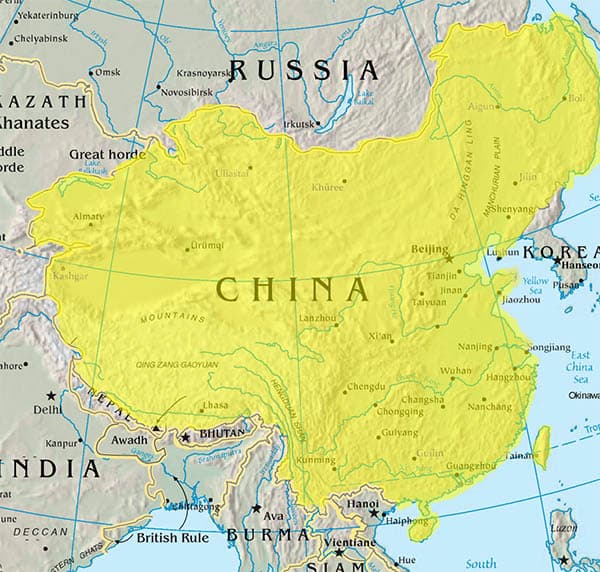
The Qing dynasty lasted from 1644 AD to 1912 AD and was the last of China’s dynasties. From 1661 AD to 1722 AD, the Kangxi Emperor of Qing, one of the greatest leaders of imperial China, took over the reins of the Qing dynasty and built a magnificent empire. However, dark days came in 1839 AD, with the First Opium War.
With the thrashing of the Qing by the British, this war marked a period when China was continually under the political influence of Japan and other Western powers. Another bloody revolt followed in 1851 AD, the Taiping Rebellion. Some historians have put the death toll from this conflict at 100 million.
Conclusion
China has had a colorful history going back millennia; its stories are as wide and varied as its landscape, with many more still to be discovered. Why not dig into the history of this fascinating country even further and lose yourself in true fact that is stranger than fiction?